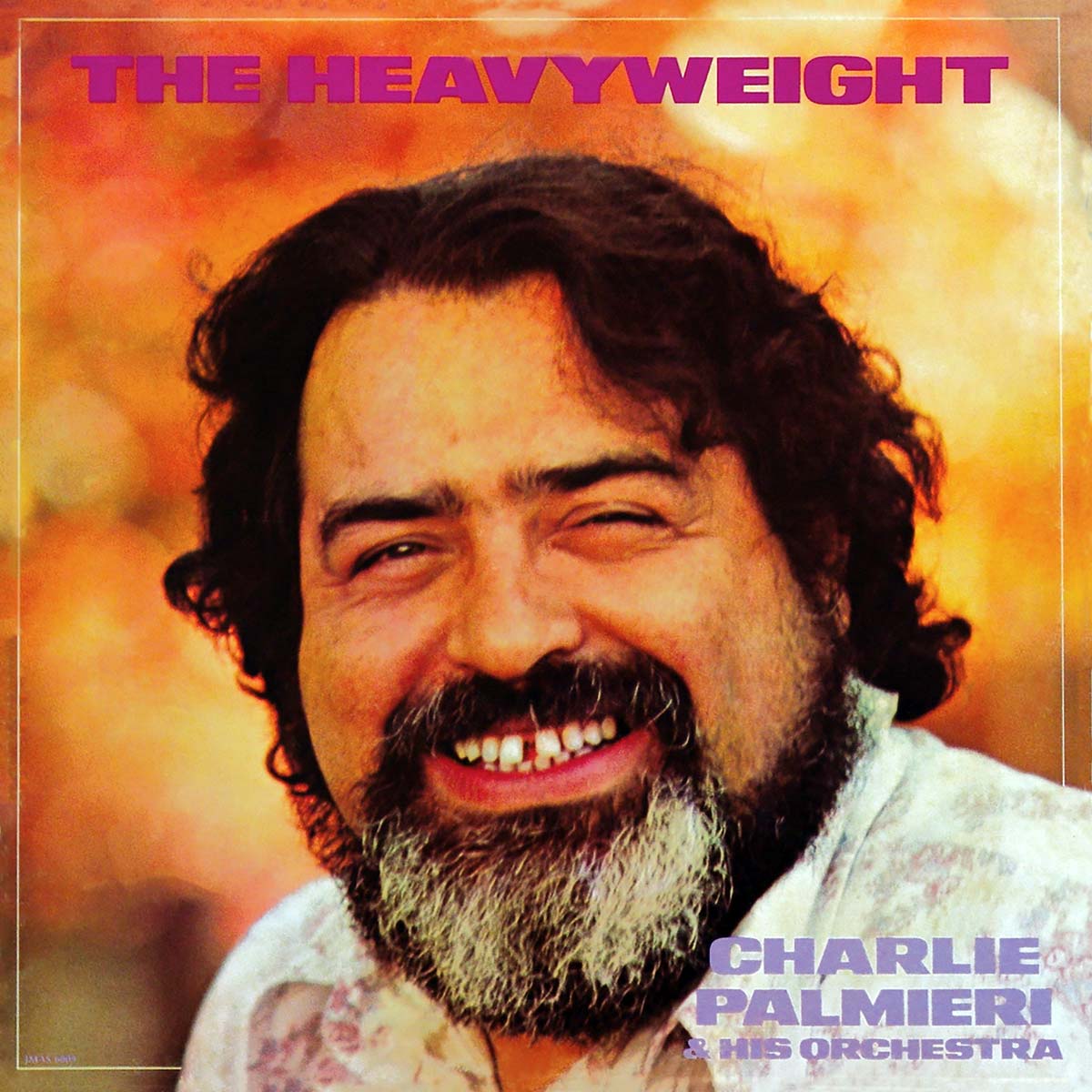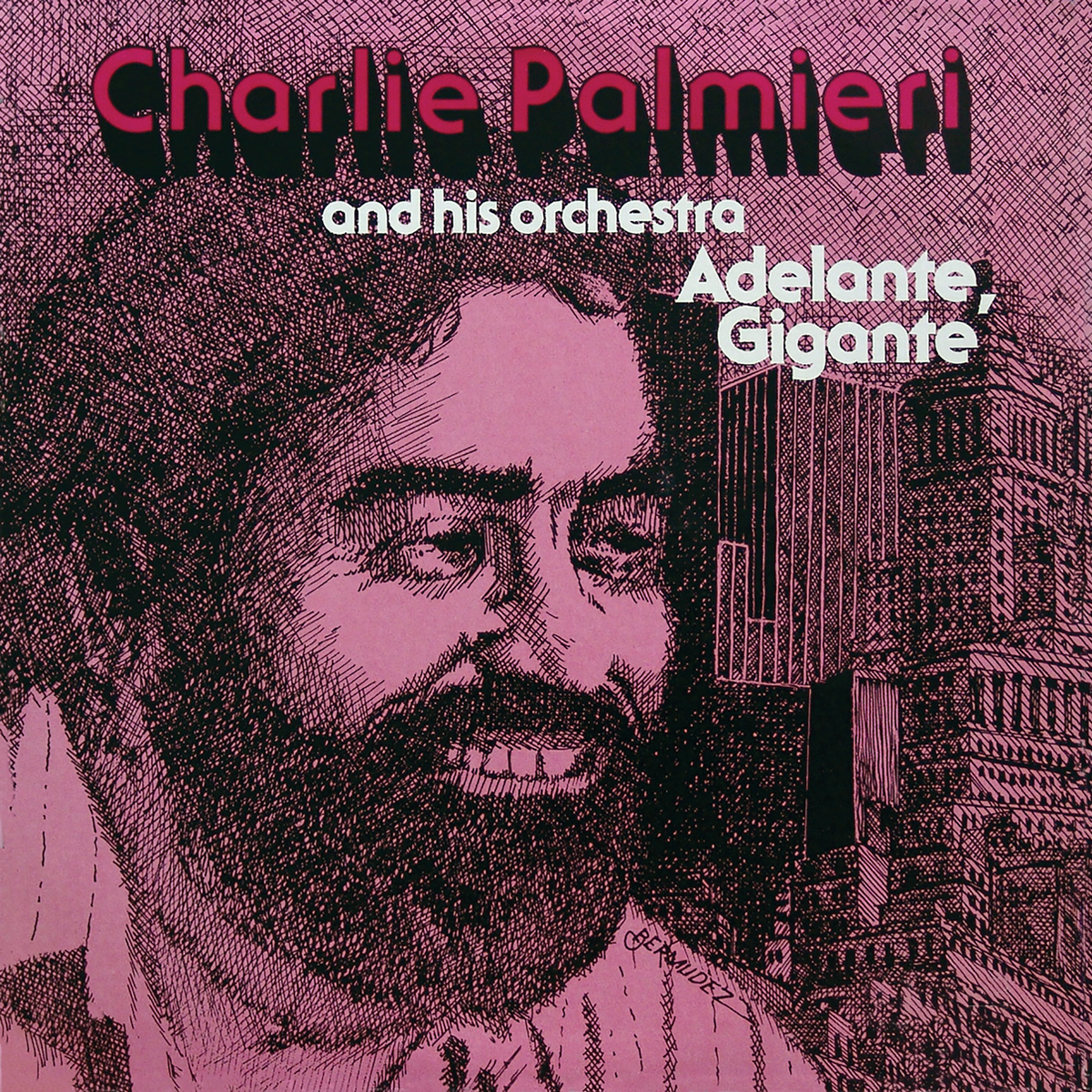
Nine years senior to his famous brother Eddie Palmieri, Charlie was born of Puerto Rican parentage in New York on November 12th 1927. A child musical prodigy who could faultlessly copy a piece on the piano by ear, he began piano lessons at the age of six and later studied at the Juilliard School of Music.
During the 1940s and ’50s he worked as a sideman with Rafael Muñoz, Xavier Cugat, Tito Puente, Pupi Campo, Johnny Seguí, Tito Rodríguez, Vicentico Valdés and Pete Terrace, among others. In 1948 he made eight Latin jazz-oriented recordings for the Alba label with his first band Conjunto Pin Pin featuring Sabú Martínez on conga, which were collected in the album El Fantastico Charlie Palmieri on Tropical Records.
Also in the Latin jazz vein, he made Easy Does It as leader of The Charlie Palmieri Quartet on George Goldner’s Gone Records label in 1959, including future Fania Records co-founder Johnny Pacheco playing conga and bongo. Meanwhile, successful tours in the late ’50s by the flute and fiddles charanga bands of Cuba’s José Fajardo and Orquesta Aragón kick-started New York City’s 1960-4 charanga boom with Charlie’s newly formed Charanga “La Duboney” leading the pack. Charlie made his album debut with Charanga “La Duboney” in 1960 on United Artists with Let’s Dance The Charanga! featuring vocalist Vitín Avilés (1924-2004) and Pacheco on flute. Pacheco split to lead his own charanga and Charlie took “La Duboney” to Al Santiago’s Alegre label for three original and swinging volumes between 1961 and 1963, as well as contribute tracks to 1961’s Las Charangas – Pacheco, Palmieri, Fajardo. In addition he became the musical director of a series of groundbreaking studio descarga (Latin jam session) albums by the Alegre All Stars.
When the charanga fad abated in the mid-’60s, Charlie joined the “swing to brass” and replaced the flute and violins with three trumpets and two trombones to form the Duboney Orchestra for 1965’s Tengo Maquina Y Voy A 60 (Going Like Sixty) on Alegre, including future Fania Records star Bobby Valentín on trumpet. Albums on BG, Tico, Atlantic and Mary Lou followed, but by the end of the decade, Charlie’s career was in the doldrums. Tito Puente gave him a boost when he hired him as the musical conductor for his television show El Mundo De Tito Puente. When the series finished, Charlie started a parallel career as a lecturer in Latin music and culture. Meantime, Tico Records producer Joe Cain persuaded Morris Levy, whose Roulette Records owned the Tico and Alegre imprints, to reactivate the dormant Alegre Records label. Joe invited Charlie, who had just been doing small club dates, back into the new fold to make a fine trio of albums between 1972 and 1975 with Vitín Avilés on lead vocals, the first of which was El Gigante Del Teclado. Charlie rejigged his horn section to two trumpets and sax (played by Bobby Nelson, who doubled on flute).
Reflecting his jazz and descarga proclivities, Charlie’s arrangements of the seven tracks built-in oodles of space for solos, especially from himself on piano and organ and trumpeter Alfredo “Chocolate” Armenteros. Cuban-born Chocolate has worked with a who’s who of Latin luminaries, ranging from Arsenio Rodríguez through Beny Moré and Machito to Eddie Palmieri. The biggest hit spawned by the album, “La Hija De Lola”, written by veteran Puerto Rican singer/composer and former heartthrob Raúl Marrero, has become an evergreen classic. In fact the winners of the 2005 Grammy Award for the best salsa album, the Spanish Harlem Orchestra, cover the song on their album Across 110th Street on Libertad Records. In addition to Vitín’s magnificent vocals, the original packs in a tasty organ solo from Charlie and a trumpet solo in Chocolate’s unmistakable typical septeto style. Bucking the norm, Charlie allows the duration of the outstanding cuts “Coco” and “El Pan Sobao” to stretch to over 6:40 and 8:30 respectively. His gossamer light piano solo on “Coco” floats over bassist Bobby Rodríguez’s rock-steady tumbao. The self-penned “El Pan Sobao” provides a showcase for a keynote piano solo and sabor-laden trumpet embellishment from Chocolate. The jazzy instrumental “Que Se Vaya”, written by B. Potts, features an extended organ solo from Charlie and a brief solo from timbalero Quique Dávila.
Following the three Joe Cain productions, Charlie went on to release five more albums as a leader on Coco, Alegre (controlled at that stage by Fania co-founder Jerry Masucci) and Tropical Budda between 1974 and 1984 before his untimely death from a heart attack in 1988.
Musicians: Charlie Palmieri: Piano, Organ & Melodica Alfredo (Chocolate) Armenteros: Trumpet Lou Laurita: Trumpet Bobby Nelson: Sax-Flute Bobby Rodriguez: Fender Bass Quique Davila: Timbales Johnny Rodriguez: Bongo Luis Rodriguez: Conga Robby Franquiz: Percussion Charlie Palmieri: Percussion Singer: Vitin Aviles Chorus: Tito Puente, Vayo El Indio, Adalberto Santiago Recorded at: Generation Sound Studios Engineer: Tony May Photography and Art Design: John Dentato Coordinator: Miriam Vazquez Arranged and Conducted by: Charlie Palmieri Produced by: Joe Cain
Written by John Child





